The Lyavaraka Ultrabasic Complex, Serpentinite Belt, Kola Peninsula, Russia
Abstract
:1. Introduction
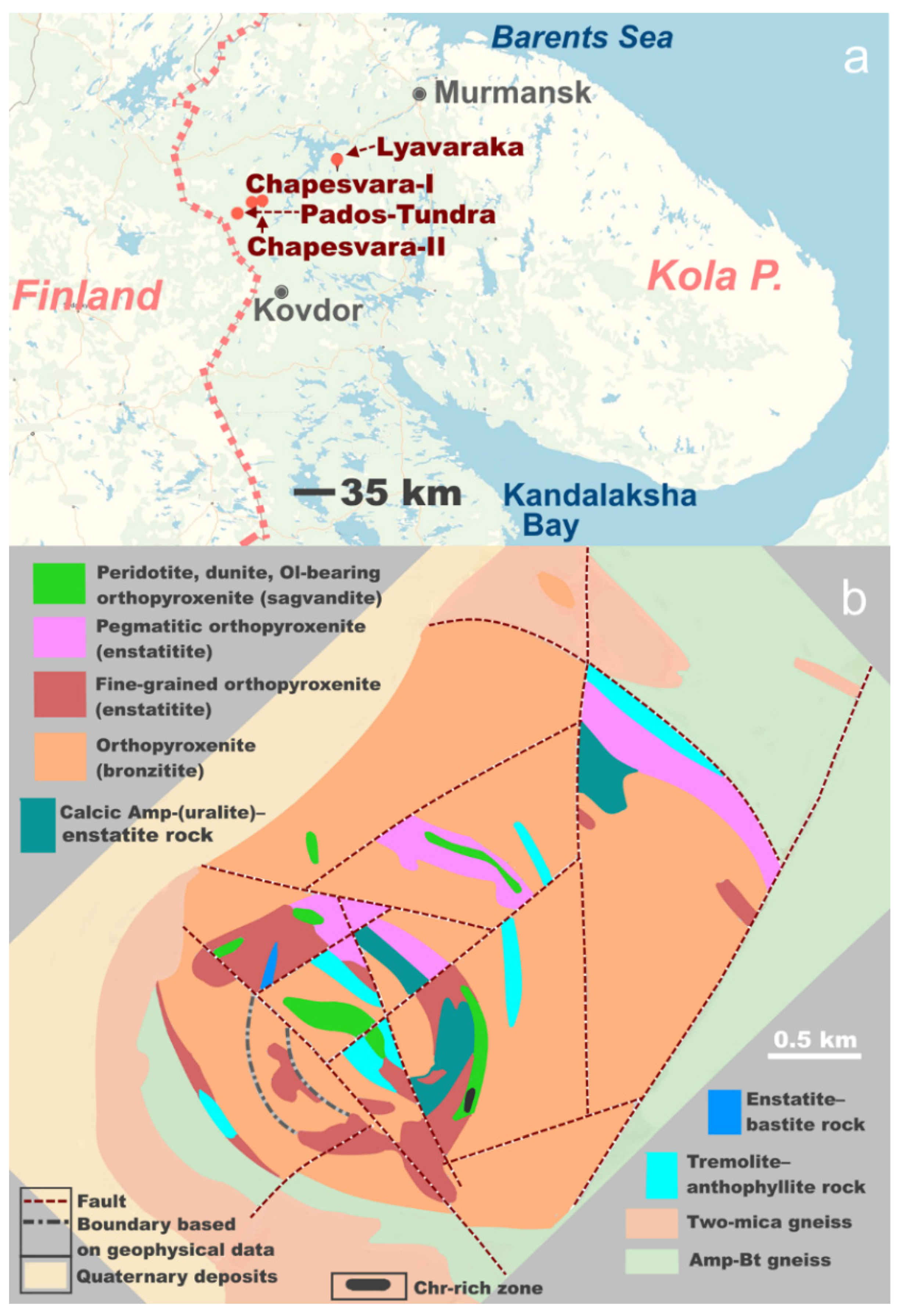
2. Materials and Methods
3. Results
3.1. Geological Setting
3.1.1. Exposures and Significant Petrographic Details
3.1.2. Compositional Variations in the Lyavaraka Complex
3.1.3. Geochemical Variations in the Lyavaraka Complex
4. Discussion
4.1. Geotectonic Inferences and Implications for Primary Melts
4.2. Internal Structure, Zones and Crystallization of the Lyavaraka Complex
5. Conclusions
- (1)
- The Lyavaraka ultrabasic complex is one of several dunite–harzburgite–orthopyroxenite intrusive bodies that crystallized from an Al-undepleted komatiitic magma. They are exposed as shallow plutonic complexes in the Serpentinite Belt–Tulppio Belt (the SB–TB megastructure), which defines a large igneous province of Paleoproterozoic age.
- (2)
- The emplacement of the Lyavaraka and related complexes coincides with extension in the stable craton of the Fennoscandian Shield in the Early Paleoproterozoic. This geotectonic setting accounts for the shallow emplacement of highly magnesian komatiitic magma.
- (3)
- Zone I, an ultrabasic core-like zone, Zone II with predominant orthopyroxene, and Zone III, with recurrent Ol + Cpx + Pl, correspond to the three stages of crystallization of the Lyavaraka complex. Primocrysts of hypermagnesian Opx (Mg# 91–93) nucleated at a relatively high level of fO2 in central areas of Zone II as olivine (Mg# 89.1–90.3) was forming in Zone I.
- (4)
- In Zone III, olivine grains of a second generation (Mg# 74.5–75.8) appeared after the primocrystic Cpx (Mg# up to 88.0). The recurrence of olivine is attributed to the progressive buildup in fO2 and conversion of Fe2+ to Fe3+, well documented in earlier studies of oxide parageneses at Lyavaraka.
- (5)
- The elevated content of volatiles (H2O, CO2, Cl) in the highly magnesian magma accounts for its ability to be emplaced to a shallow crustal level. The occurrence of megaspheroids of orthopyroxene up to 12–15 cm across and of fine-grained orthopyroxene cocrystallized with Mg-rich calcic amphibole is indicative of a fluid-rich melt. Its degassing caused an increase in the intrinsic fugacity of oxygen.
Supplementary Materials
Author Contributions
Funding
Data Availability Statement
Acknowledgments
Conflicts of Interest
References
- Shukevich, A.M. An Account of Geological Mapping in the Rivers Nota and Pecha Basin in the Years 1932–1933 (Kola Peninsula); The Leningradsky (Northwestern) Geological Survey: Leningrad, Russia, 1933; Report in Russian. [Google Scholar]
- Shukevich, A.M. The Final Account of Field Investigations of the Pados-Tundra Geological Party No. 9 (Kola Peninsula); The Leningradsky (Northwestern) Geological Survey: Leningrad, Russia, 1936; Report in Russian. [Google Scholar]
- Murashov, D.F. Ultrabasic intrusions of the Serpentinite Belt (Pados-Tundra and other). In Geology of the USSR, Murmanskaya Oblast, Geological Description; Gosgeoltekhizdat Publisher: Moscow, Russia, 1958; Volume 27, pp. 318–321. (In Russian) [Google Scholar]
- Mamontov, V.P.; Dokuchaeva, V.S. The geology and ore potential of the Pados-Tundra massif in the Kola Peninsula. Otech. Geol. 2005, 6, 52–60. (In Russian) [Google Scholar]
- Barkov, A.Y.; Nikiforov, A.A.; Barkova, L.P.; Korolyuk, V.N.; Martin, R.F. Zones of PGE–chromite mineralization in relation to crystallization of the Pados-Tundra ultramafic complex, Serpentinite Belt, Kola Peninsula, Russia. Minerals 2021, 11, 68. [Google Scholar] [CrossRef]
- Barkov, A.Y.; Nikiforov, A.A.; Martin, R.F. The structure and cryptic layering of the Pados-Tundra ultramafic complex, Serpentinite Belt, Kola Peninsula, Russia. Bull. Geol. Soc. Finl. 2017, 89, 35–56. [Google Scholar] [CrossRef]
- Barkov, A.Y.; Nikiforov, A.A.; Tolstykh, N.D.; Shvedov, G.I.; Korolyuk, V.N. Compounds of Ru–Se–S, alloys of Os–Ir, framboidal Ru nanophases, and laurite–clinochlore intergrowths in the Pados-Tundra complex, Kola Peninsula, Russia. European J. Mineral. 2017, 29, 613–621. [Google Scholar] [CrossRef]
- Barkov, A.Y.; Nikiforov, A.A.; Halkoaho, T.A.A.; Konnunaho, J.P. The origin of spheroidal patterns of weathering in the Pados-Tundra mafic-ultramafic complex, Kola Peninsula, Russia. Bull. Geol. Soc. Finl. 2016, 88, 105–113. [Google Scholar] [CrossRef]
- Barkov, A.Y.; Martin, R.F.; Izokh, A.E.; Nikiforov, A.A.; Korolyuk, V.N. Ultramagnesian olivine in the Monchepluton (Fo96) and Pados-Tundra (Fo93) layered intrusions (Kola Peninsula). Russ. Geol. Geophys. 2021, 62, 324–338. [Google Scholar] [CrossRef]
- Serov, P.A.; Bayanova, T.B.; Steshenko, E.N.; Kunakkuzin, E.L.; Borisenko, E.S. Metallogenic setting and evolution of the Pados-Tundra Cr-bearing ultramafic complex, Kola Peninsula: Evidence from Sm–Nd and U–Pb isotopes. Minerals 2020, 10, 186. [Google Scholar] [CrossRef]
- Vaasjoki, M. (Ed.) Radiometric Age Determinations from Finnish Lapland and Their Bearing on the Timing of Precambrian Volcano-sedimentary Sequences; Geological Survey of Finland: Espoo, Finland, 2001. [Google Scholar]
- Barkov, A.Y.; Korolyuk, V.N.; Barkova, L.P.; Martin, R.F. Double-front crystallization in the Chapesvara ultramafic subvolcanic complex, Serpentinite Belt, Kola Peninsula, Russia. Minerals 2019, 10, 14. [Google Scholar] [CrossRef]
- Barkov, A.Y.; Nikiforov, A.A.; Barkova, L.P.; Korolyuk, V.N. Komatiitic subvolcanic rocks in the Mount Khanlauta massif, Serpentinite Belt, Kola Peninsula. Russ. Geol. Geoph. 2022, 63, 1185–1207. (In Russian) [Google Scholar] [CrossRef]
- Yang, S.H.; Hanski, E.; Li, C.; Maier, W.D.; Huhma, H.; Mokrushin, A.V.; Latypov, R.; Lahaye, Y.; O’Brien, H.; Qu, W.J. Mantle source of the 2.44–2.50-Ga mantle plume-related magmatism in the Fennoscandian Shield: Evidence from Os, Nd and Sr isotope compositions of the Monchepluton and Kemi intrusions. Miner. Deposita 2016, 51, 1055–1073. [Google Scholar] [CrossRef]
- Melezhik, V.A.; Hanski, E.J. Palaeotectonic and palaeogeographic evolution of Fennoscandia in the Early Palaeoproterozoic. In Reading the Archive of Earth’s Oxygenation. 1; The Palaeoproterozoic of Fennoscandia as Context for the Fennoscandian Arctic Russia—Drilling Early Earth Project; Melezhik, V.A., Prave, A.R., Fallick, A.E., Kump, L.R., Strauss, H., Lepland, A., Hanski, E.J., Eds.; Springer: Berlin/Heidelberg, Germany, 2013. [Google Scholar] [CrossRef]
- Hanski, E.J. Evolution of the Palaeoproterozoic (2.50–1.95 Ga) non-orogenic magmatism in the eastern part of the Fennoscandian Shield. In Reading the Archive of Earth’s Oxygenation. 1; The Palaeoproterozoic of Fennoscandia as Context for the Fennoscandian Arctic Russia—Drilling Early Earth, Project; Melezhik, V.A., Prave, A.R., Fallick, A.E., Kump, L.R., Strauss, H., Lepland, A., Hanski, E.J., Eds.; Springer: Berlin/Heidelberg, Germany, 2013. [Google Scholar] [CrossRef]
- Kulikov, V.S.; Bychkova, Y.V.; Kulikova, V.V.; Ernst, R. The Vetreny Poyas (Windy Belt) subprovince or southeastern Fennoscandia: An essential component of the ca. 2.5–2.4 Ga Sumian large igneous provinces. Precambrian Res. 2010, 183, 589–601. [Google Scholar] [CrossRef]
- Barkov, A.Y.; Nikiforov, A.A.; Korolyuk, V.N.; Barkova, L.P.; Martin, R.F. The chromian spinels of the Lyavaraka ultrabasic complex, Serpentinite Belt, Kola Peninsula, Russia: Patterns of zoning, hypermagnesian compositions, and early oxidation. Can. Mineral. 2021, 59, 1693–1709. [Google Scholar] [CrossRef]
- Barkov, A.Y.; Nikiforov, A.A.; Korolyuk, V.N.; Barkova, L.P.; Martin, R.F. Anomalous chromite–ilmenite parageneses in the Chapesvara and Lyavaraka ultramafic complexes, Kola Peninsula, Russia. Period. Mineral. 2020, 89, 299–317. [Google Scholar] [CrossRef]
- Spirov, V.N. Geological map (1:10 000) of the detailed mapping area at River Khlebnaya; an account of the western Kola geological party for the years 1968–1971. In The Allarechensky Geological Party, North-Western Territorial Geological Department, Murmansk Geological-Prospecting Expedition; The U.S.S.R. Ministry of Geology: Murmansk, Russia, 1972; Unpubl. Report in Russian. [Google Scholar]
- Dokuchaeva, V.S. The geology and ore potential of the Mount Lyavaraka massif. In Geology of Ore Deposits in the Kola Peninsula; Kola Science Centre: Apatity, Russia, 1981; pp. 34–45. (In Russian) [Google Scholar]
- Warr, L.N. IMA–CNMNC approved mineral symbols. Mineral. Mag. 2021, 85, 291–320. [Google Scholar] [CrossRef]
- Korolyuk, V.N.; Usova, L.V.; Nigmatulina, E.N. Accuracy in the determination of the compositions of main rock-forming silicates and oxides on a JXA-8100 microanalyzer. J. Anal. Chem. 2009, 64, 1042–1046. [Google Scholar] [CrossRef]
- Lavrent’ev, Y.G.; Korolyuk, V.N.; Usova, L.V.; Nigmatulina, E.N. Electron probe microanalysis of rock-forming minerals with a JXA-8100 electron probe microanalyzer. Russ. Geol. Geoph. 2015, 56, 1428–1436. [Google Scholar] [CrossRef]
- Nikolaeva, I.V.; Palesskii, S.V.; Koz’menko, O.A.; Anoshin, G.N. Analysis of geologic reference materials for REE and HFSE by inductively coupled plasma-mass spectrometry (ICP-MS). Geochem. Intern. 2008, 46, 1016–1022. [Google Scholar] [CrossRef]
- Nikolaeva, I.V.; Palesskii, S.V.; Chirko, O.S.; Chernonozhkin, S.M. Determination of major and trace elements by inductively coupled mass-spectrometry in silicate rocks after fusion with LiBO2. Anal. I Control 2012, 8, 134–142. [Google Scholar]
- Karmanova, N.G.; Karmanov, N.S. A universal methodology of X-ray fluorescence analysis of rocks using an ARL-9900XP spectrometer. In Proceedings of the VII All-Russian Conference on X-ray Spectral Analysis, Novosibirsk, Russia, 19–23 September 2011; p. 126. (In Russian). [Google Scholar]
- Balagansky, V.V.; Gorbunov, I.A.; Mudruk, S.V. Palaeoproterozoic Lapland-Kola and Svecofennian Orogens (Baltic Shield). Her. Kola Sci. Cent. RAS 2016, 3, 5–11. (In Russian) [Google Scholar]
- Balagansky, V.V.; Glebovitsky, V.A. The Lapland granulite belt and the Tanaelv belt. In Early Precambrian of the Baltic Shield; Nauka: Saint-Petersburg, Russia, 2005; pp. 127–175. (In Russian) [Google Scholar]
- Mindlina, A.A. Geological Map of the USSR, scale 1:200,000, the Kola Series (R-35-XXXV, XXXVI). In North-Western Geological Department, 1958; Shukevich, A.M., Ed.; Ministry of Geology and Mineral Resources Protection, Gosgeoltekhizdat Publisher: Moscow, Russia, 1959. [Google Scholar]
- Belyaev, K.D. Geological Map of the USSR, scale 1:200,000, the Kola Series (R-36 XXXI, XXXII). In North-Western Geological Department, 1960; Polferov, D.V., Ed.; Ministry of Geology and Mineral Resources Protection, Gosgeoltekhizdat Publisher: Moscow, Russia, 1962. [Google Scholar]
- Lunina, O.P.; Roginskaya, B.I. Geological Map of the USSR, scale 1:200,000, the Kola Series (Q-36-I). In North-Western Geological Department, 1960; Shurkin, K.A., Ed.; Ministry of Geology and Mineral Resources Protection, Gosgeoltekhizdat Publisher: Moscow, Russia, 1962. [Google Scholar]
- Solodkaya, R.I. Geological Map of the USSR, scale 1:200,000, the Kola Series (Q-36-II). In North-Western Geological Department, 1961; Perevozchikova, V.A., Ed.; Ministry of Geology and Mineral Resources Protection, Gosgeoltekhizdat Publisher: Moscow, Russia, 1963. [Google Scholar]
- Leontyeva, O.P.; Belonin, M.D. Geological Map of the USSR, scale 1:200,000, the Kola Series (Q-35-VI). In North-Western Geological Department, 1961; Shurkin, K.A., Ed.; Ministry of Geology and Mineral Resources Protection, Gosgeoltekhizdat Publisher: Moscow, Russia, 1964. [Google Scholar]
- Lindh, A.; Eskelinen, J.; Luukas, J.; Kousa, J.; Nironen, M. The Bedrock of Finland 1:200,000 Map Modified from the General Map 1:1 Million; National Land Survey of Finland, Geological Survey of Finland: Espoo, Finland, 2014. [Google Scholar]
- Nironen, M.; Kousa, J.; Luukas, J.; Lahtinen, R. (Eds.) Geological Map of Finland—Bedrock 1:1,000,000, 2nd ed.; Geological Survey of Finland: Espoo, Finland, 2016. [Google Scholar]
- Morimoto, N. Nomenclature of pyroxenes. Can. Mineral. 1989, 27, 143–156. [Google Scholar] [CrossRef]
- Schmid-Beurmann, P.; Bente, K. Stability properties of the CuS2-FeS2 solid solution series of pyrite type. Mineral. Petrol. 1995, 53, 333–341. [Google Scholar] [CrossRef]
- Grove, T.L.; Parman, S.W. Thermal evolution of the Earth as recorded by komatiites. Earth Planet. Sci. Lett. 2004, 219, 173–187. [Google Scholar] [CrossRef]
- Robin-Popieul, C.C.M.; Arndt, N.T.; Chauvel, C.; Byerly, G.R.; Sobolev, A.V.; Wilson, A. A new model for Barberton komatiites: Deep critical melting with high melt retention. J. Petrol. 2012, 53, 2191–2229. [Google Scholar] [CrossRef]
- McDonough, W.F.; Sun, S.-S. The composition of the Earth. Chem. Geol. 1995, 120, 223–253. [Google Scholar] [CrossRef]
- Vinogradov, L.A. Formations of Alpine-type ultrabasic rocks in the southwestern part of the Kola Peninsula (The Notozerskiy ultrabasic belt). In Problems of Magmatism of the Baltic Shield; Nauka Publisher: Leningrad, Russia, 1971; pp. 147–153. (In Russian) [Google Scholar]
- Puchtel, I.S.; Haase, K.M.; Hofmann, A.W.; Chauvel, C.; Kulikov, V.S.; Garbe-Schönberg, C.-D.; Nemchin, A.A. Petrology and geochemistry of crustally contaminated komatiitic basalts from the Vetreny Belt, southeastern Baltic Shield: Evidence for an early Proterozoic mantle plume beneath rifted Archean continental lithosphere. Geochim. Cosmochim. Acta 1997, 61, 1205–1222. [Google Scholar] [CrossRef]
- Alapieti, T.; Filen, B.; Lahtinen, J.; Lavrov, M.; Smolkin, V.; Voitsekhovsky, S. Early Proterozoic layered intrusions in the northeastern part of the Fennoscandian Shield. Mineral. Petrol. 1990, 42, 1–22. [Google Scholar] [CrossRef]
- Amelin, Y.V.; Heaman, L.M.; Semenov, V.S. U–Pb geochronology of layered mafic intrusions in the eastern Baltic Shield: Implications for the timing and duration of Paleoproterozoic continental rifting. Precamb. Res. 1995, 75, 31–46. [Google Scholar] [CrossRef]
- Barnes, S.J.; Fiorentini, M.L. Komatiite magmas and sulfide nickel deposits: A comparison of variably enriched Archean terranes. Econ. Geol. 2012, 107, 755–780. [Google Scholar] [CrossRef]
- Barkov, A.Y.; Nikiforov, A.A.; Barkova, L.P.; Martin, R.F. Occurrences of Pd–Pt bismuthotellurides and a phosphohedyphane-like phase in sulfide veins of the Monchepluton layered complex, Kola Peninsula, Russia. Minerals 2022, 12, 624. [Google Scholar] [CrossRef]
- Stone, W.E.; Deloule, E.; Larson, M.S.; Lesher, C.M. Evidence for hydrous high-MgO melts in the Precambrian. Geology 1997, 25, 143. [Google Scholar] [CrossRef]
- Wilson, A.H.; Shirey, S.B.; Carlson, R.W. Archaean ultra-depleted komatiites formed by hydrous melting of cratonic mantle. Nature 2003, 423, 858–861. [Google Scholar] [CrossRef] [PubMed]
- Czamanske, G.K.; Wones, D.R. Oxidation during magmatic differentiation, Finnmarka complex, Oslo area, Norway. 2. The mafic silicates. J. Petrol. 1973, 14, 349–380. [Google Scholar] [CrossRef]
- Arndt, N.T. Thick, layered peridotite–gabbro lava flows in Munro Township, Ontario. Can. J. Earth Sci. 1977, 14, 2620–2637. [Google Scholar] [CrossRef]
- Arndt, N.T. Differentiation of komatiite flows. J. Petrol. 1986, 27, 279–301. [Google Scholar] [CrossRef]
- Nesbitt, R.W.; Jahn, B.-M.; Purvis, A.C. Komatiites: An early Precambrian phenomenon. J. Volcanol. Geotherm. Res. 1982, 14, 31–45. [Google Scholar] [CrossRef]
- Hanski, E.; Huhma, H.; Rastas, P.; Kamenetsky, V.S. The Palaeoproterozoic komatiite–picrite association of Finnish Lapland. J. Petrol. 2001, 42, 855–876. [Google Scholar] [CrossRef]
- Barkov, A.Y.; Nikiforov, A.A.; Martin, R.F. A novel mechanism of spheroidal weathering: A case study from the Monchepluton layered complex, Kola Peninsula, Russia. Bull. Geol. Soc. Finl. 2015, 87, 79–85. [Google Scholar] [CrossRef]
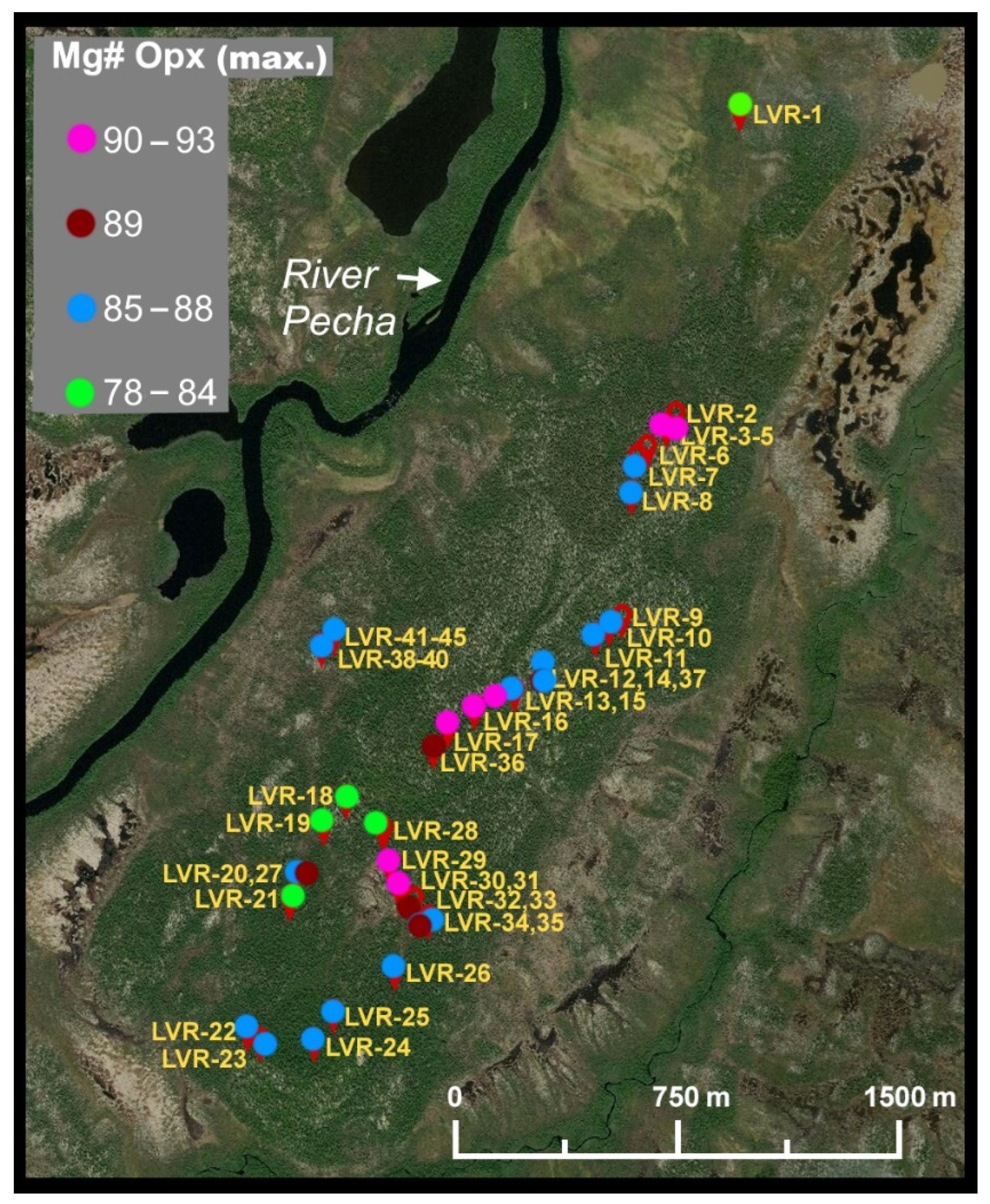
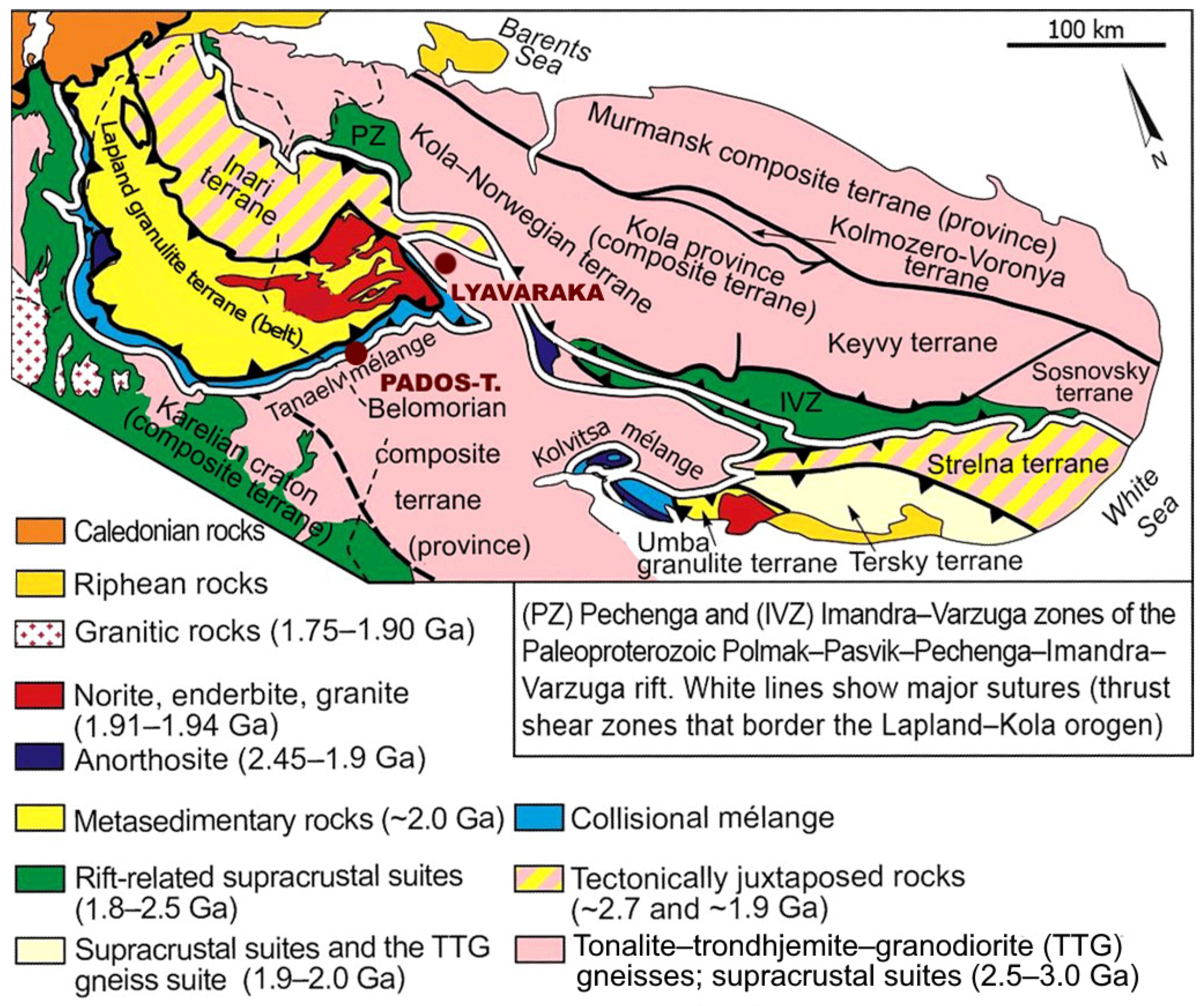
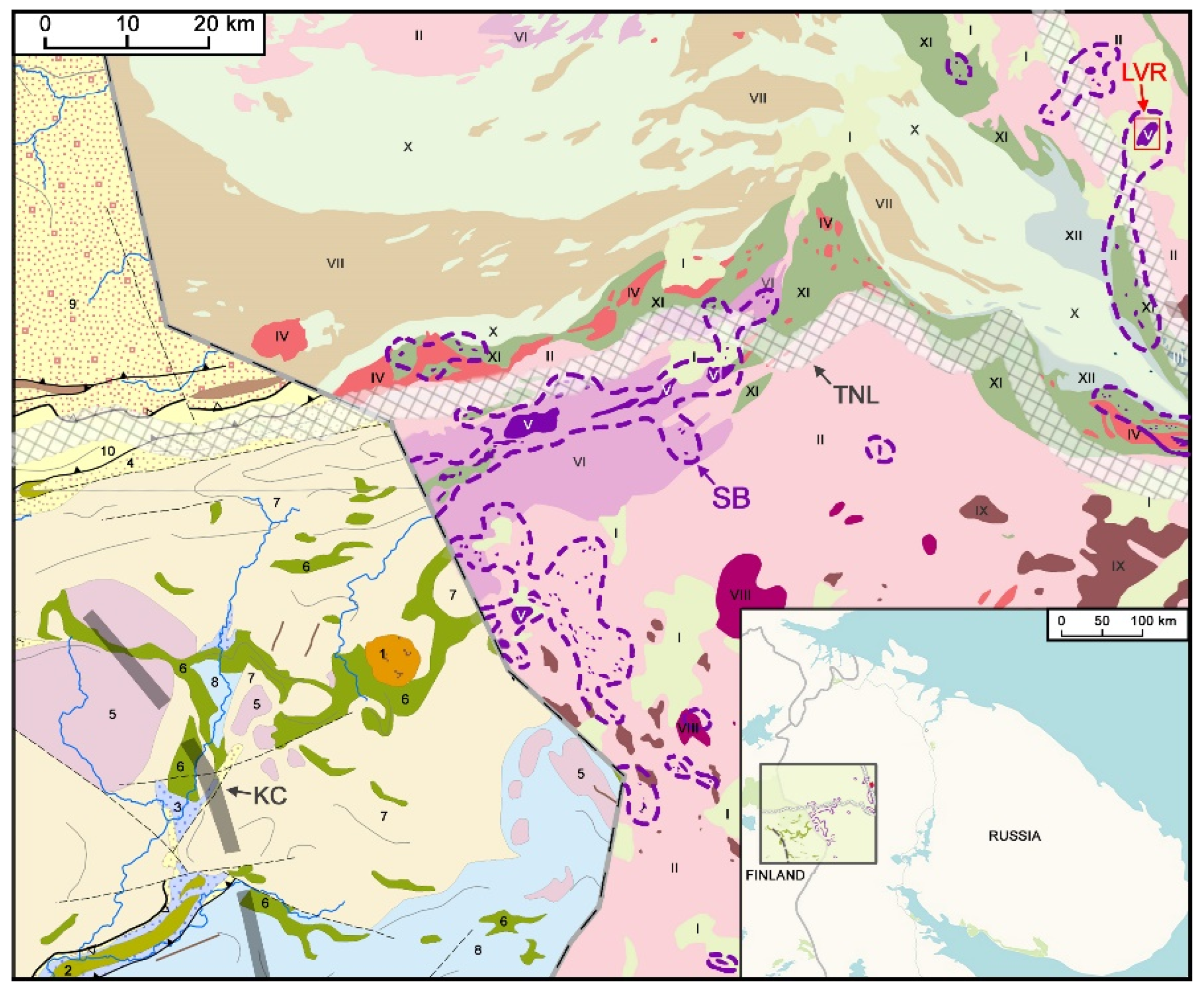
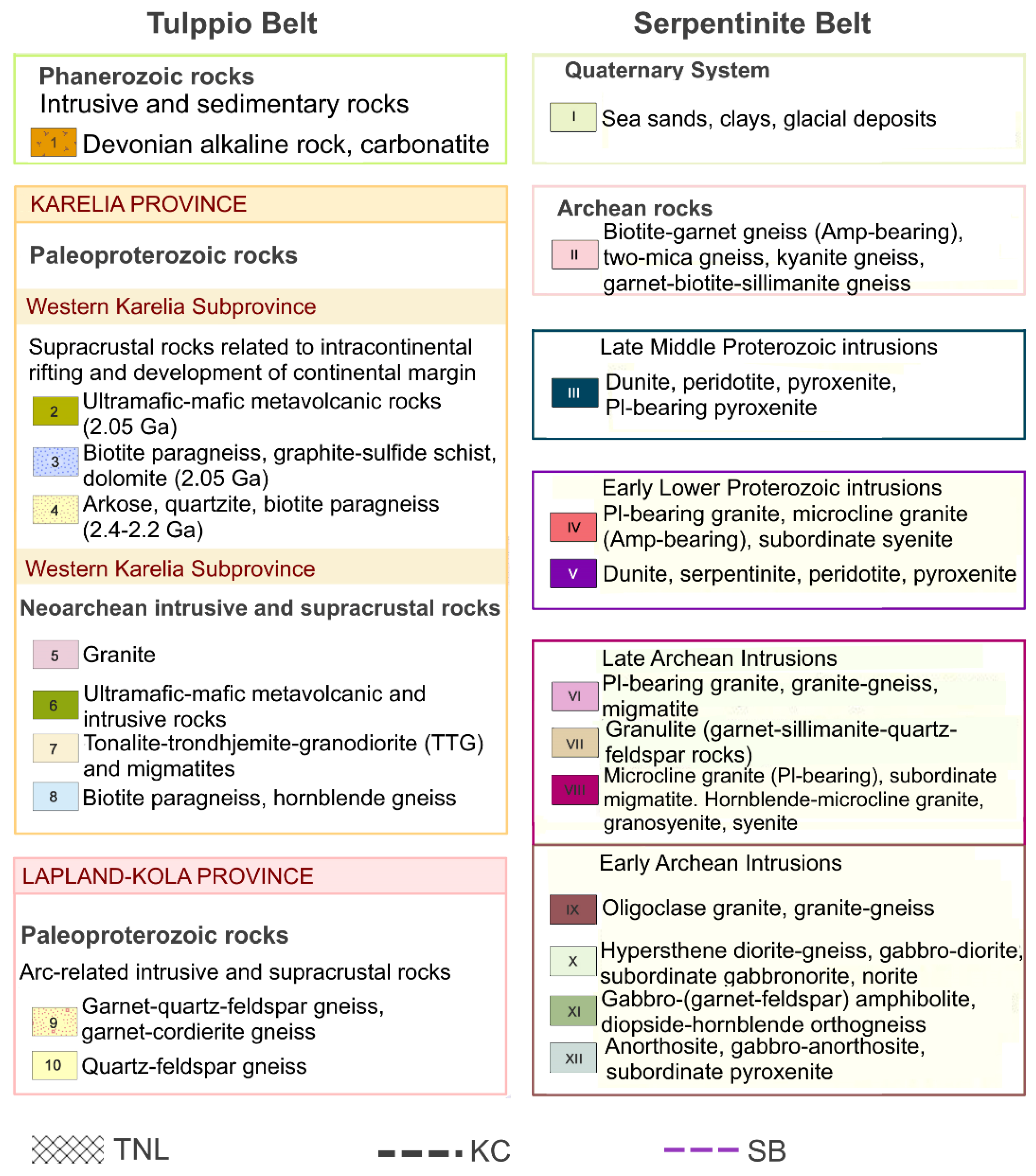
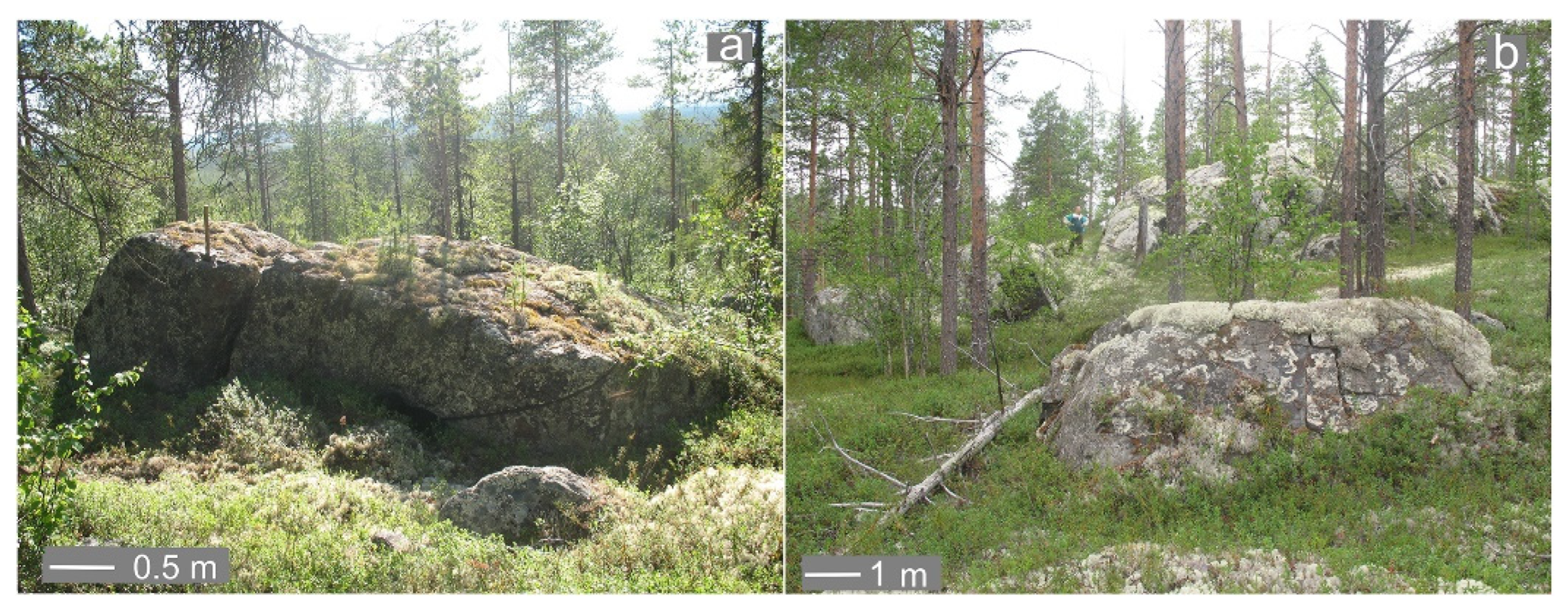
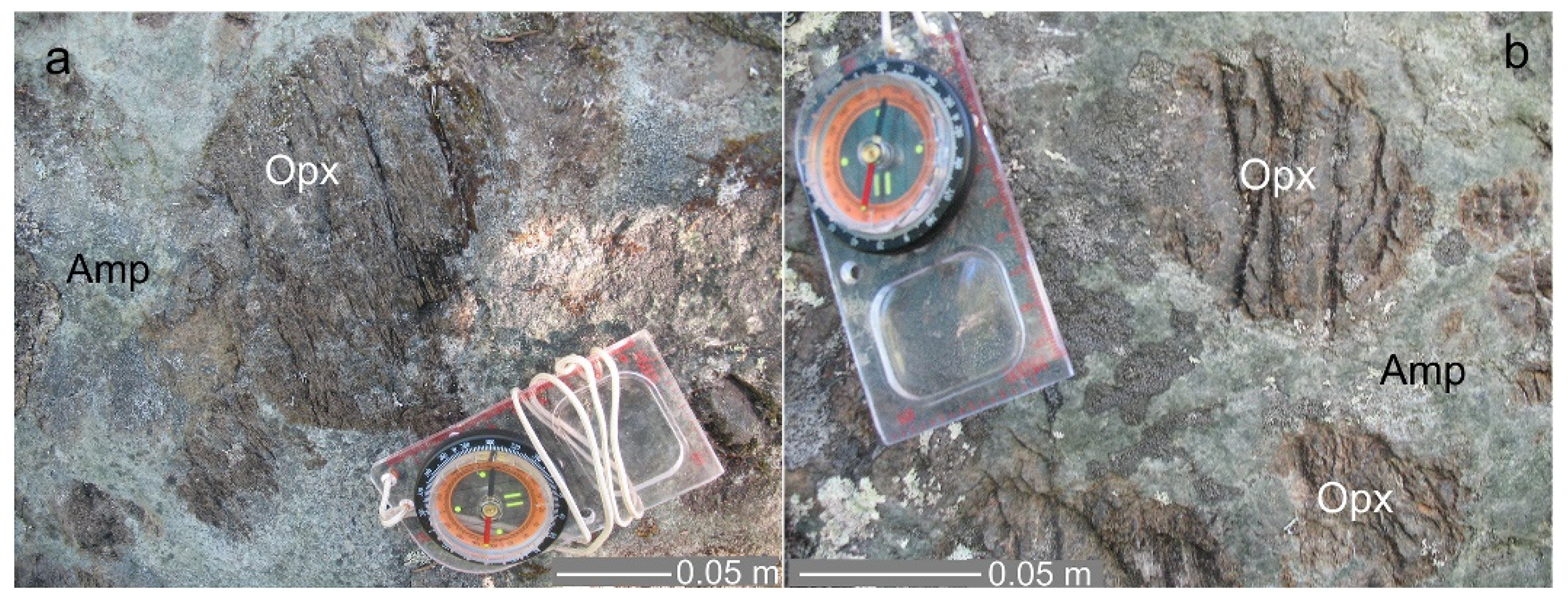

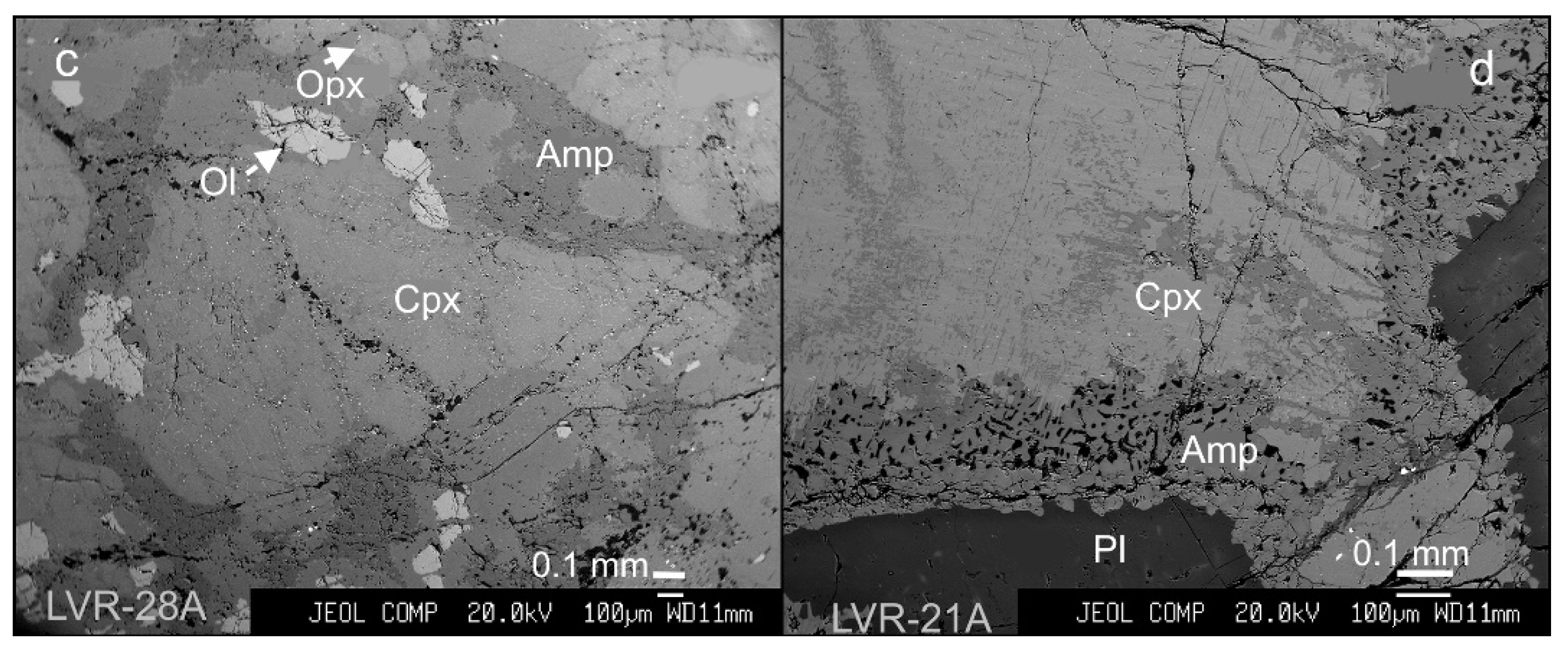
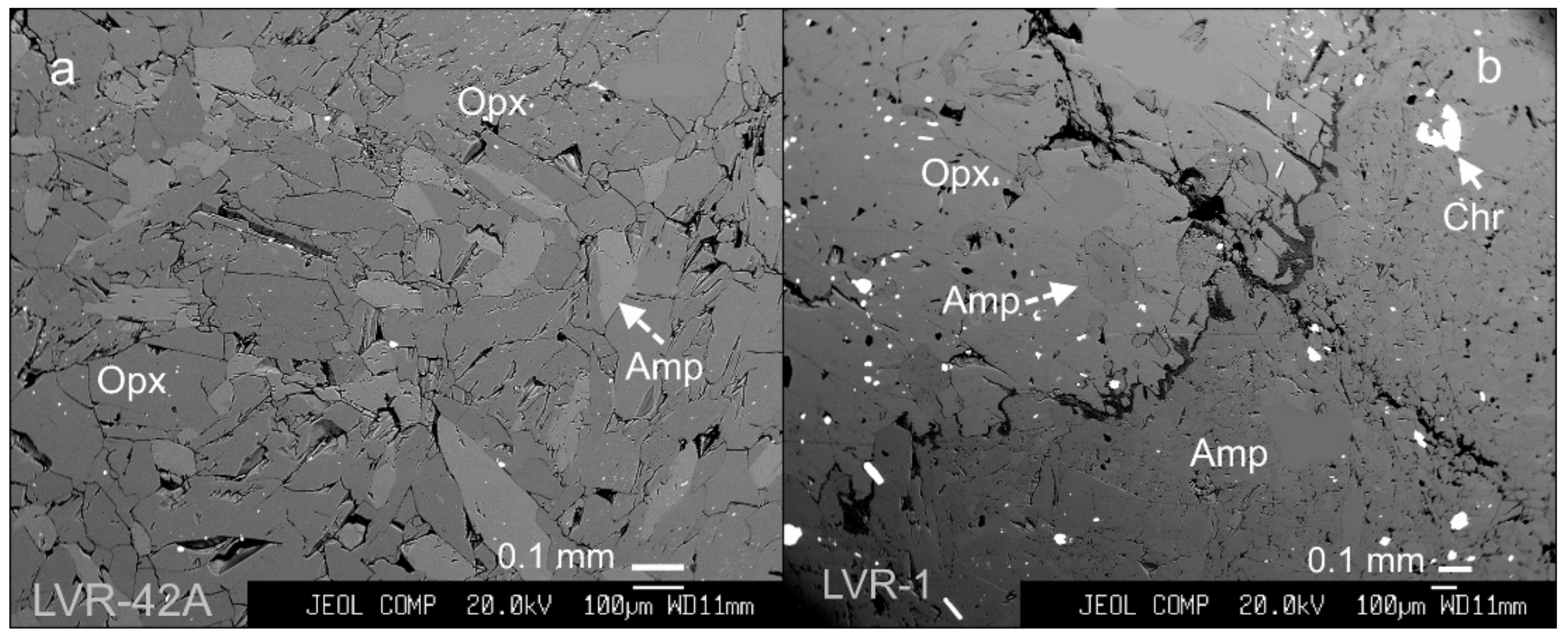
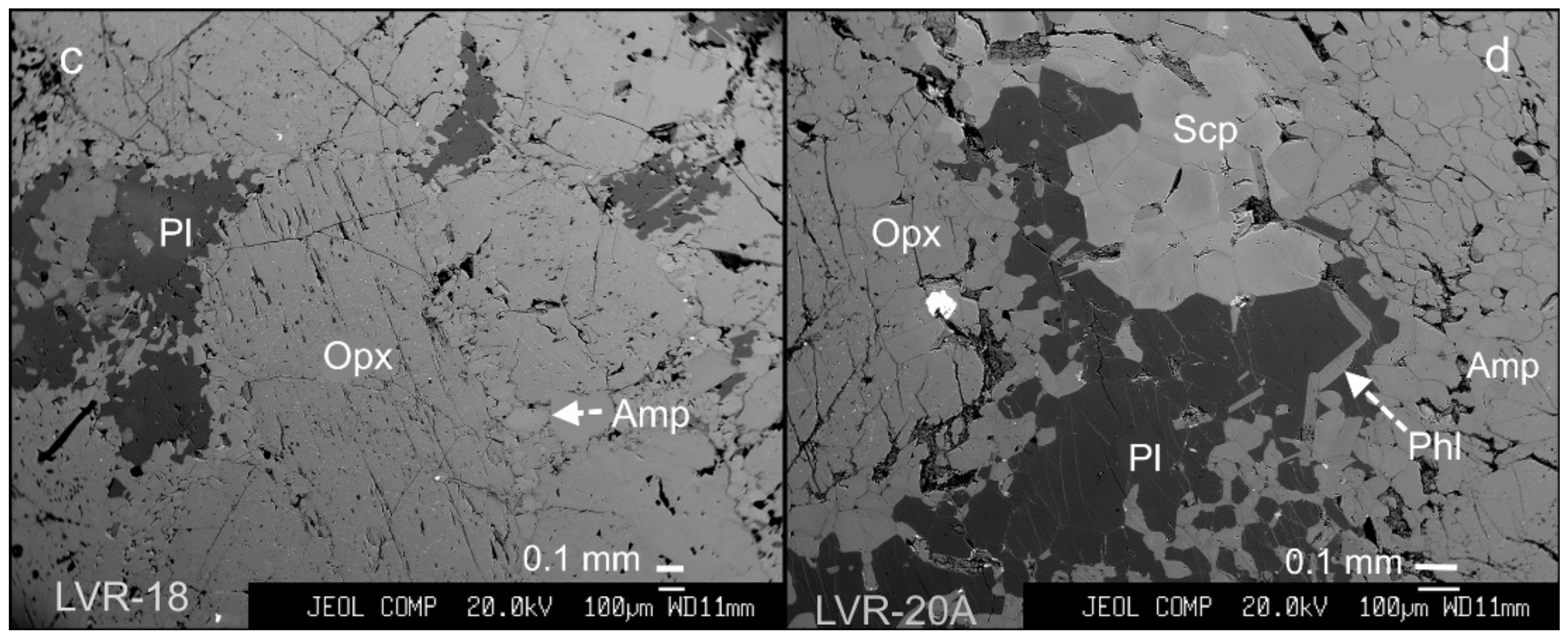
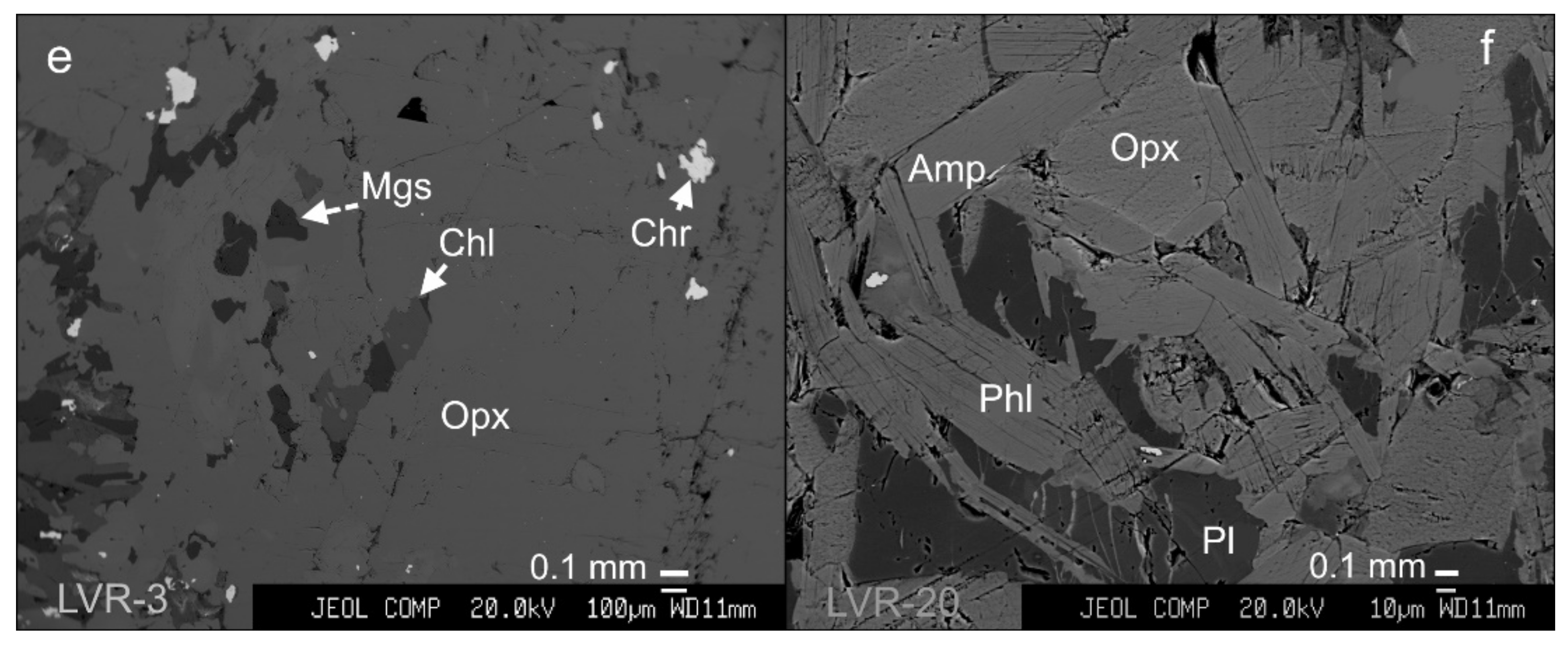

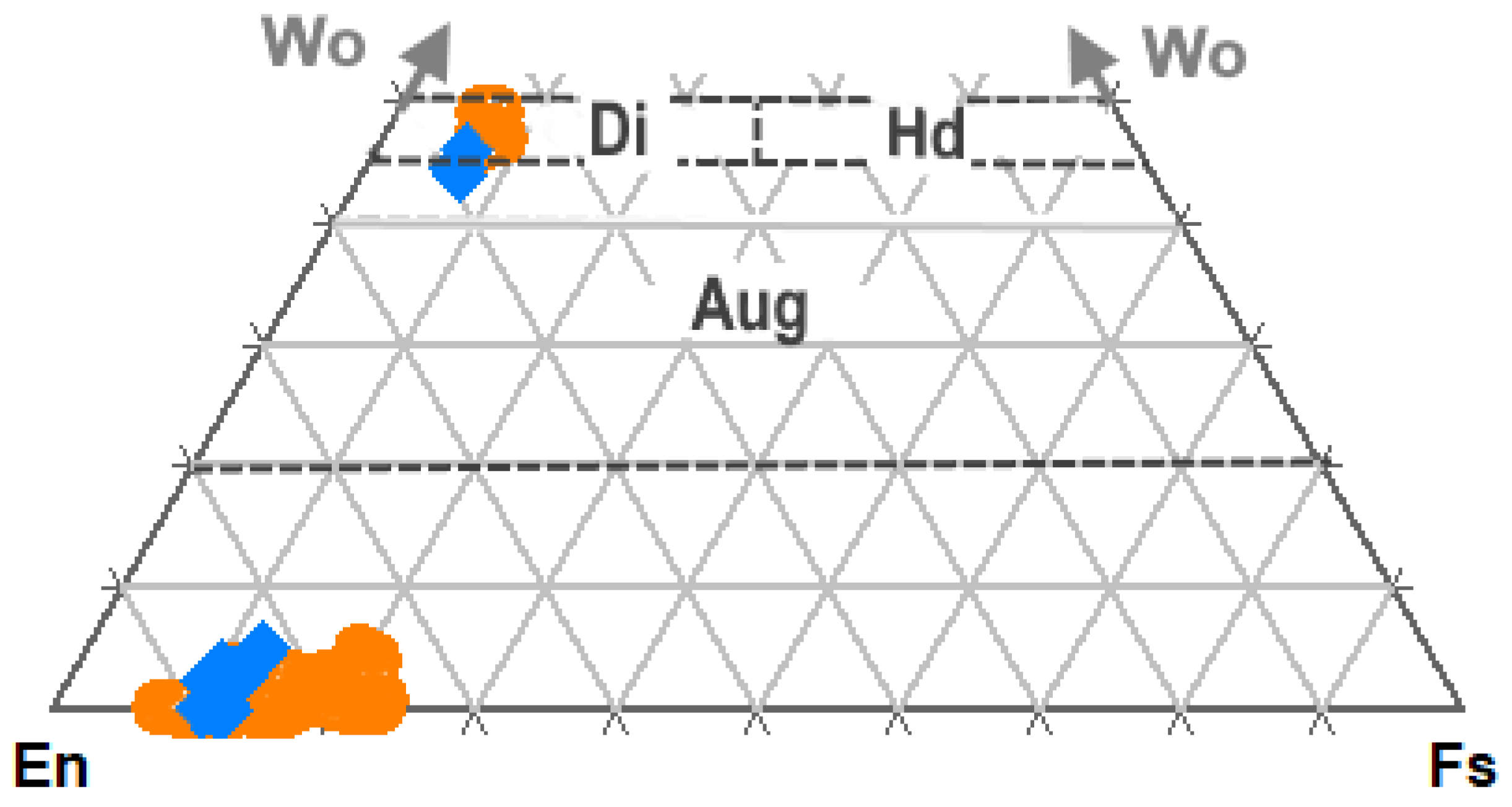
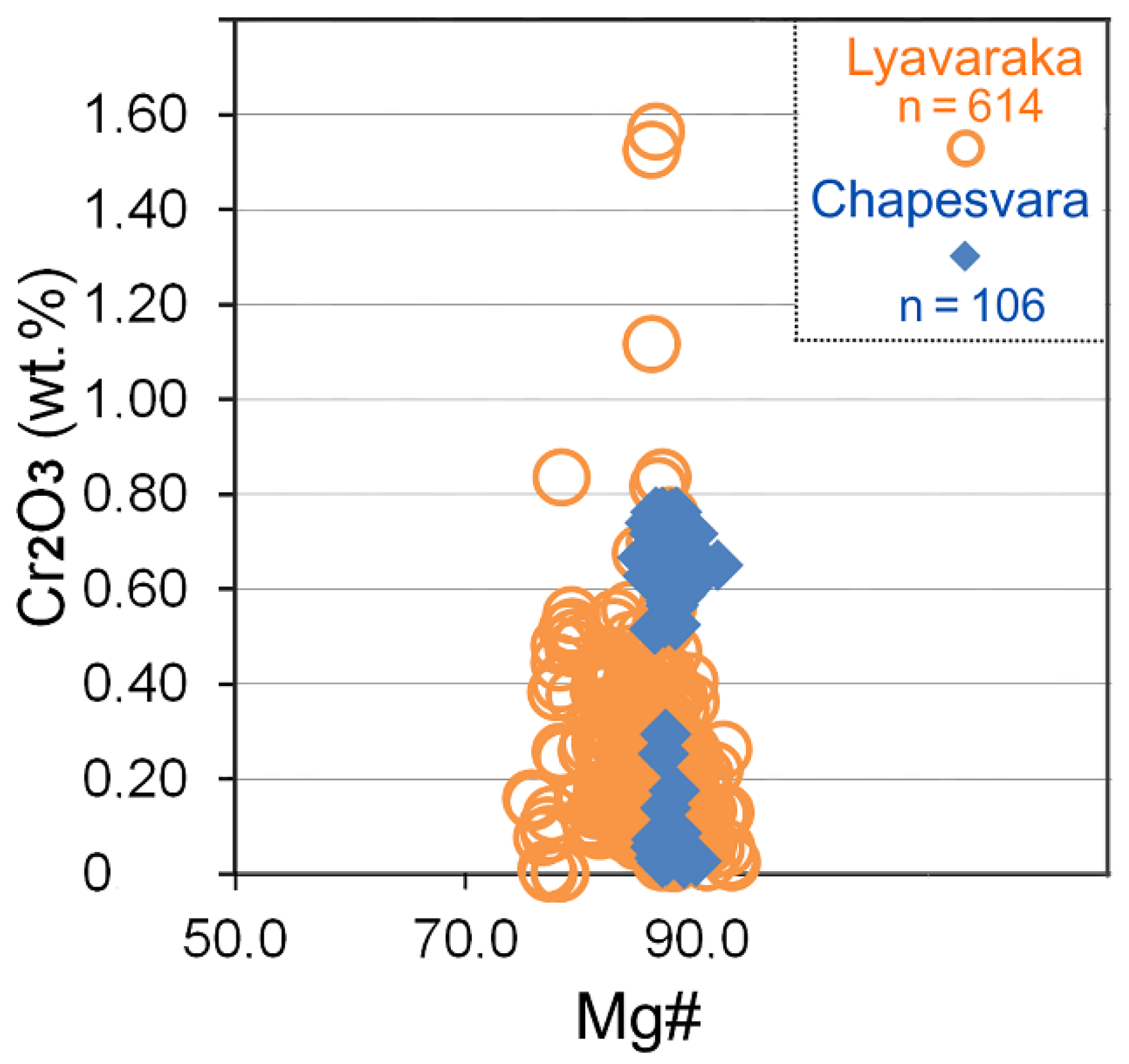
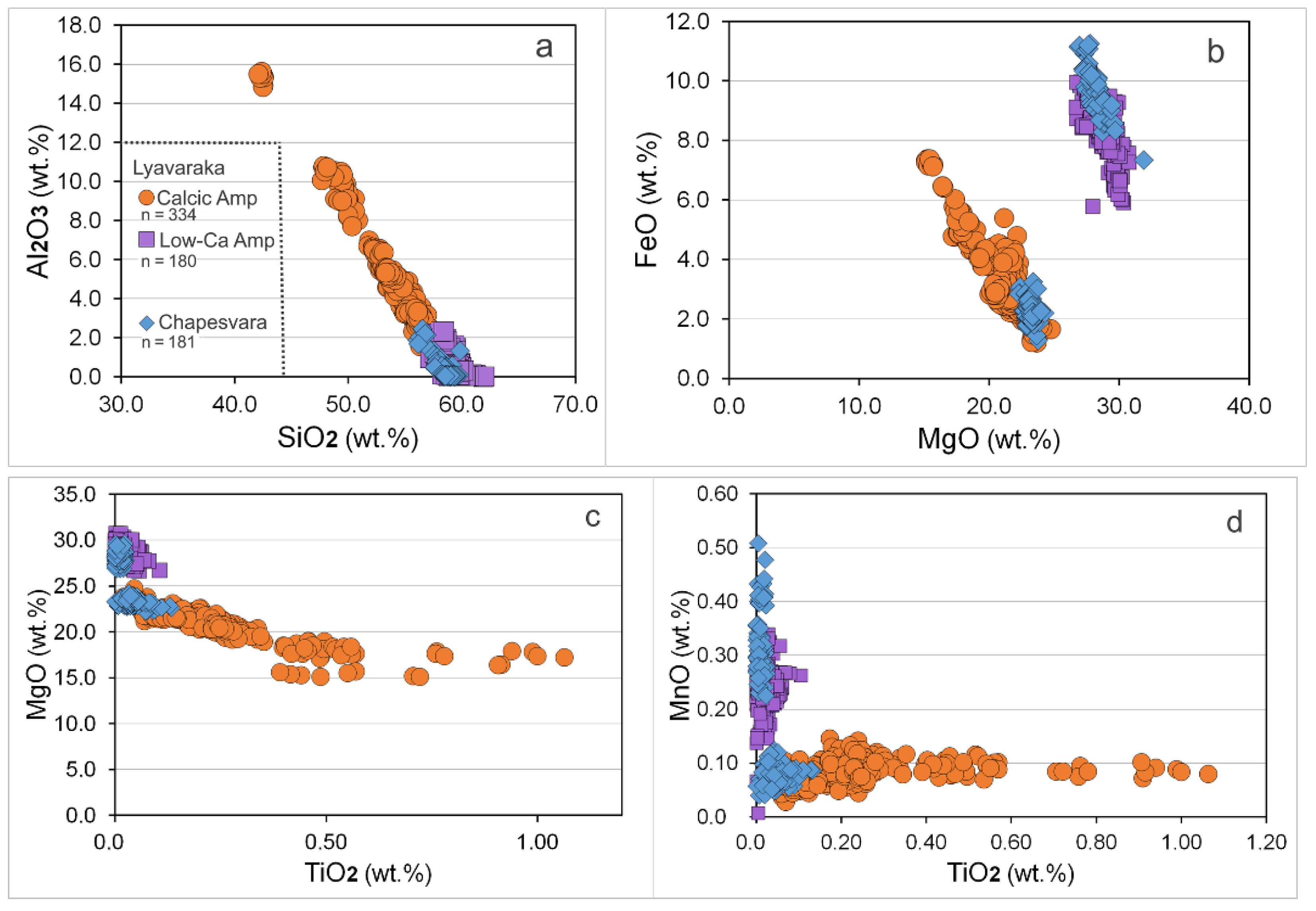
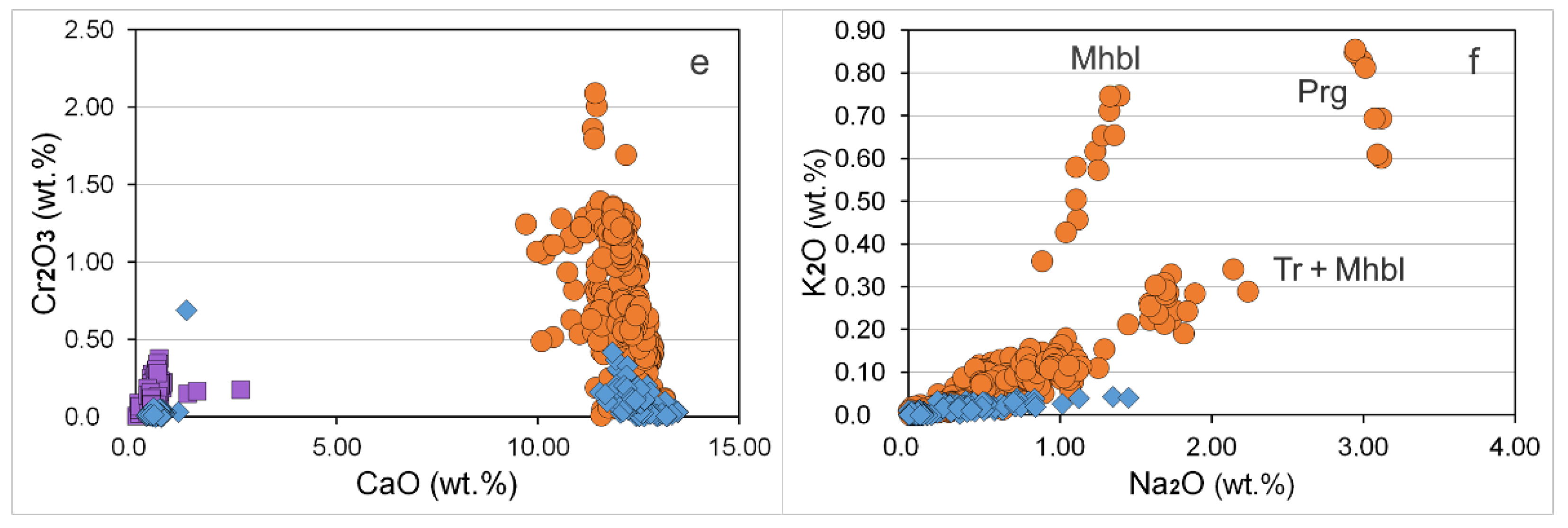


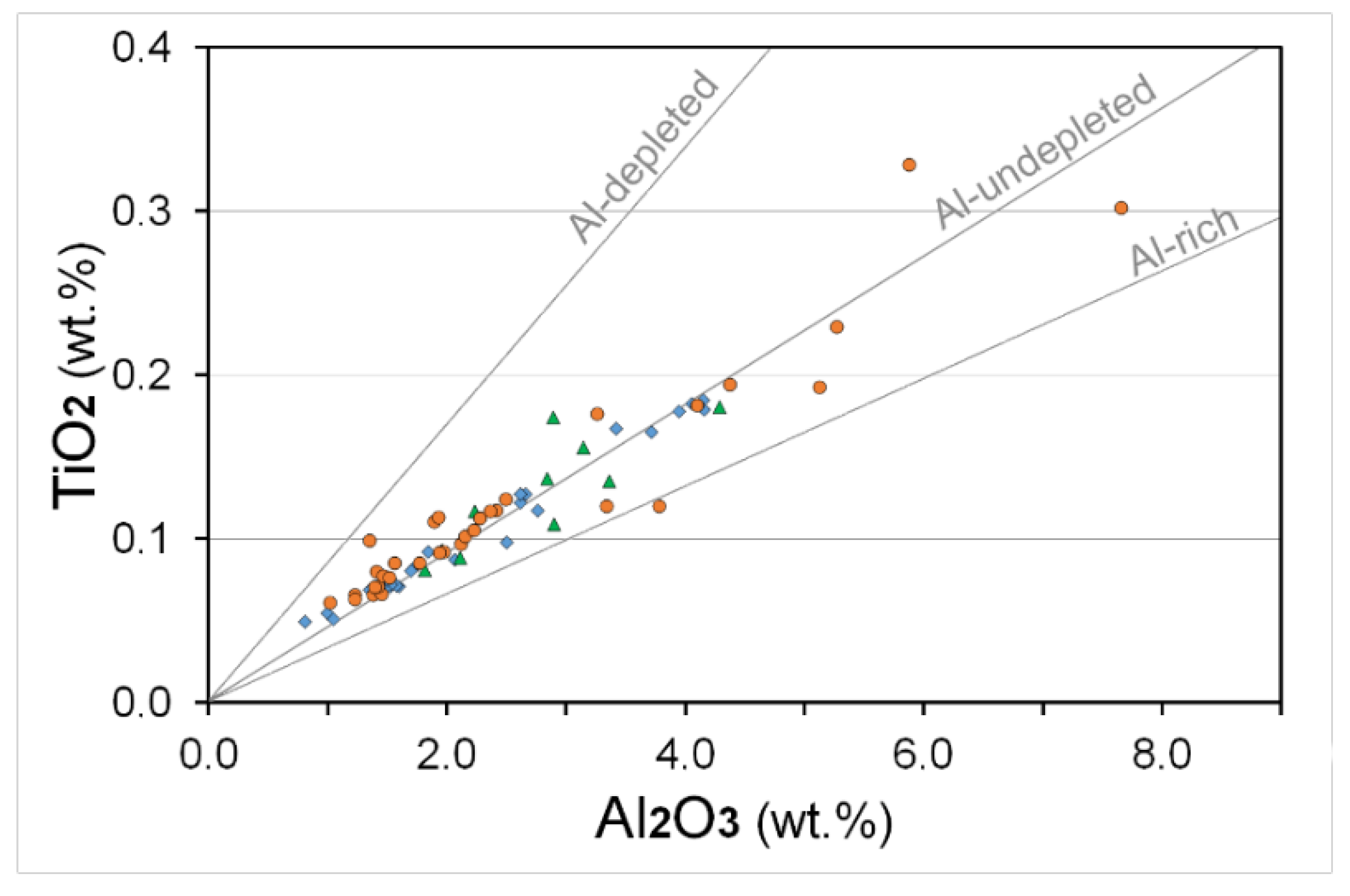

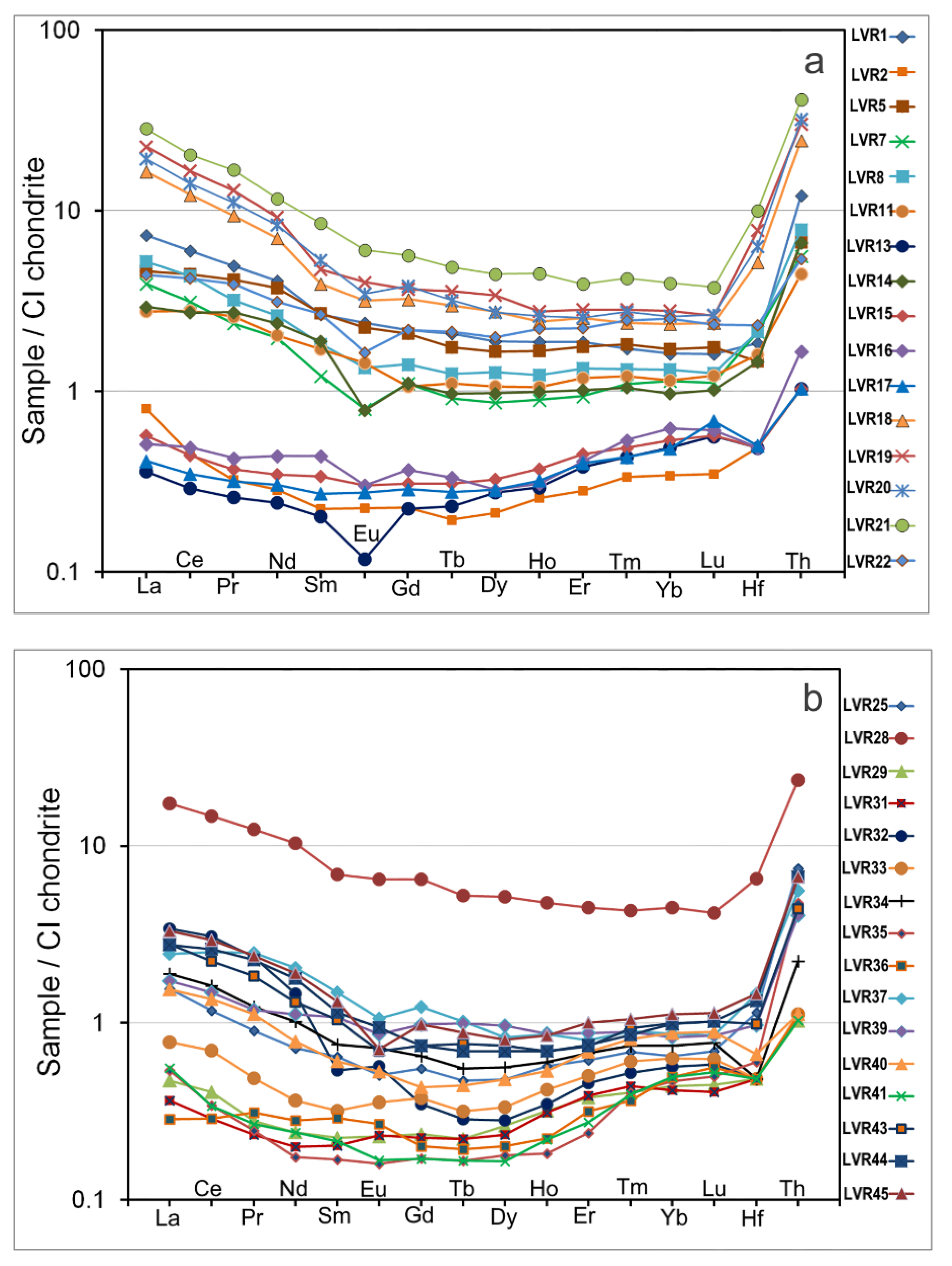
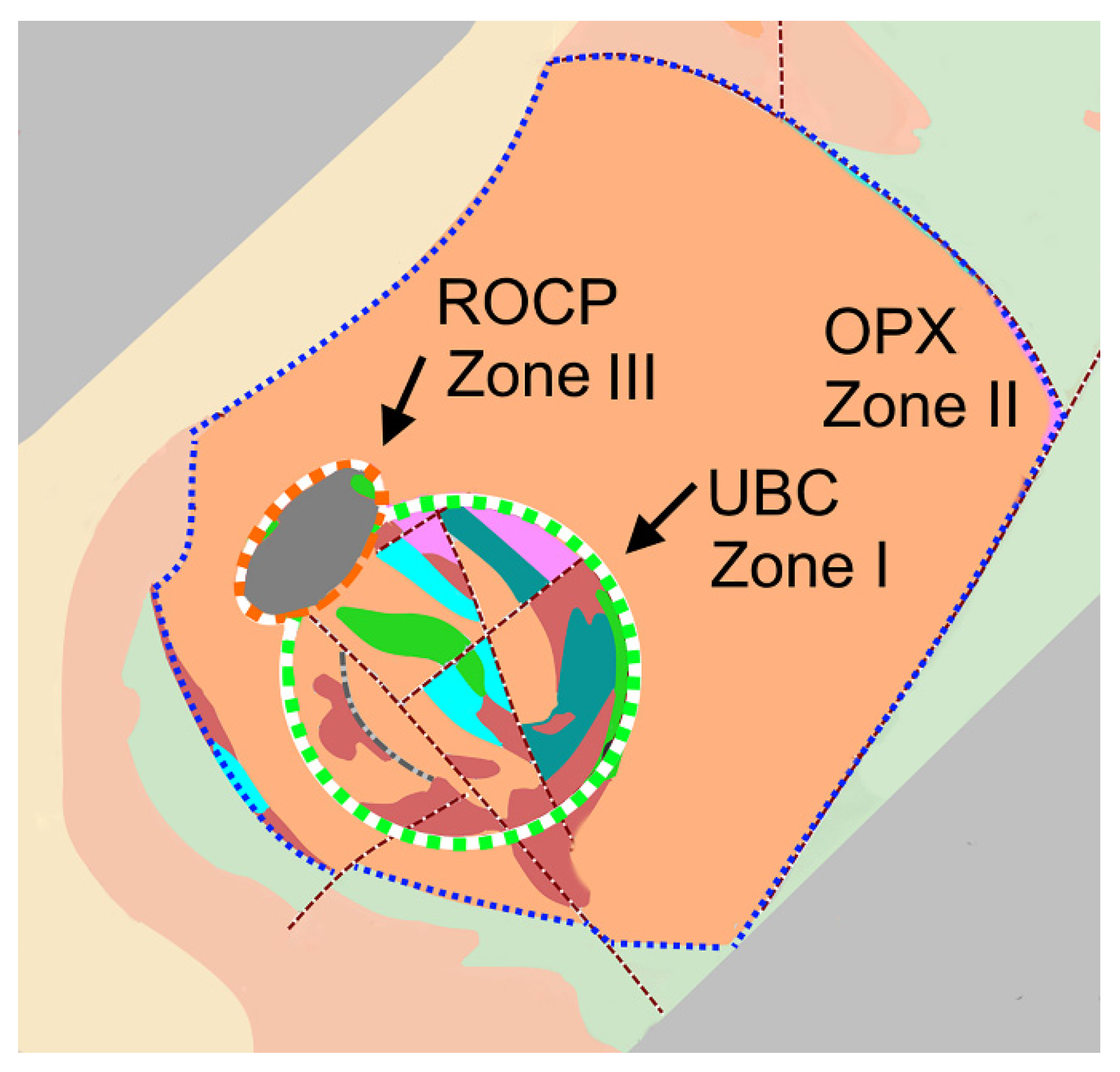
| Zone III: Zone of Recurrent Ol + Cpx + Pl |
|
|
|
|
|
|
|
| Zone II: Zone of Dominant Orthopyroxene |
|
|
|
|
| Zone I: Olivine-Dominant Core-like Zone |
|
|
|
Publisher’s Note: MDPI stays neutral with regard to jurisdictional claims in published maps and institutional affiliations. |
© 2022 by the authors. Licensee MDPI, Basel, Switzerland. This article is an open access article distributed under the terms and conditions of the Creative Commons Attribution (CC BY) license (https://creativecommons.org/licenses/by/4.0/).
Share and Cite
Barkov, A.Y.; Nikiforov, A.A.; Korolyuk, V.N.; Martin, R.F. The Lyavaraka Ultrabasic Complex, Serpentinite Belt, Kola Peninsula, Russia. Geosciences 2022, 12, 323. https://doi.org/10.3390/geosciences12090323
Barkov AY, Nikiforov AA, Korolyuk VN, Martin RF. The Lyavaraka Ultrabasic Complex, Serpentinite Belt, Kola Peninsula, Russia. Geosciences. 2022; 12(9):323. https://doi.org/10.3390/geosciences12090323
Chicago/Turabian StyleBarkov, Andrei Y., Andrey A. Nikiforov, Vladimir N. Korolyuk, and Robert F. Martin. 2022. "The Lyavaraka Ultrabasic Complex, Serpentinite Belt, Kola Peninsula, Russia" Geosciences 12, no. 9: 323. https://doi.org/10.3390/geosciences12090323
APA StyleBarkov, A. Y., Nikiforov, A. A., Korolyuk, V. N., & Martin, R. F. (2022). The Lyavaraka Ultrabasic Complex, Serpentinite Belt, Kola Peninsula, Russia. Geosciences, 12(9), 323. https://doi.org/10.3390/geosciences12090323








